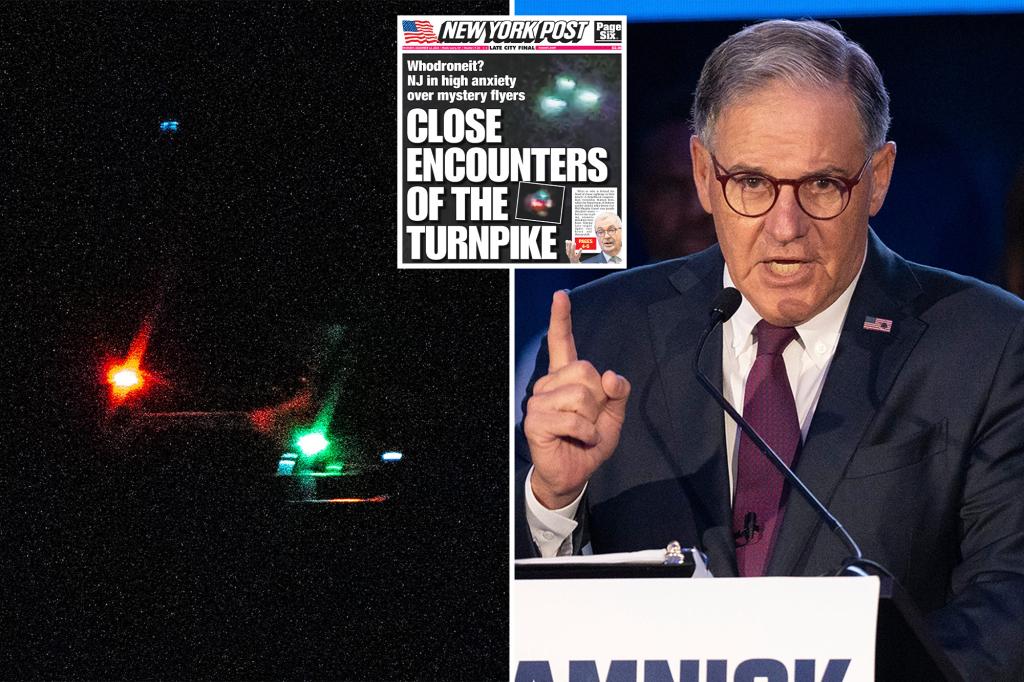The escalating mystery surrounding unidentified drones over New York and New Jersey has sparked public anxiety and fueled accusations of government secrecy. New Jersey State Senator Jon Bramnick has been particularly vocal, expressing his belief that the federal government is withholding crucial information from the public, fearing the potential reaction. He argues that the government’s silence implies a concern not about the drones themselves, but about the public’s response to the truth about their purpose. This apparent lack of transparency, he suggests, is more alarming than the unknown activities of the drones themselves. Bramnick’s contention is that the Department of Defense undoubtedly possesses the answers, yet chooses to keep the public in the dark. He dismisses the FBI’s assurances of no detected threat, suggesting that such a statement only confirms the drones haven’t yet engaged in overt hostile actions, rather than indicating their harmlessness. He questions why the government, if it possessed a benign explanation, would allow such widespread unease to fester among both citizens and elected officials.
Bramnick’s demand for transparency is not isolated. His frustration echoes the sentiments expressed by officials on both sides of the political aisle, indicating a bipartisan concern over the government’s handling of the situation. This widespread anxiety among public figures underscores the perceived gravity of the drone activity and further intensifies the pressure on the government to provide answers. The senator’s call for a limited state of emergency in New Jersey until an explanation is provided emphasizes his belief in the seriousness of the issue and reflects the growing public unease. This call for action highlights the perceived urgency of the situation and the need for immediate clarification from authorities. The public’s right to know, Bramnick argues, outweighs any potential anxieties that the truth might trigger.
The drone sightings, originating on November 18th, have escalated tensions in the region, culminating in New York Governor Kathy Hochul’s call for authorization to shoot down the drones. Hochul’s declaration that the situation has “gone too far” signals a significant shift in the official response, moving from observation to potential aggressive action. This escalation underscores the increasing seriousness with which the drone activity is being perceived, moving from a mysterious curiosity to a potential threat requiring immediate action. Her request for authorization to use lethal force against the drones represents a dramatic increase in the perceived threat level and indicates a growing impatience with the lack of clear information.
Adding to the chorus of voices demanding action is former President Donald Trump, who has also advocated for shooting down the drones if the government refuses to disclose information about them. Trump’s forceful statement, “Let the public know, and now. Otherwise, shoot them down!” reflects the growing public frustration and a desire for immediate resolution. His alignment with Governor Hochul on this issue, despite their political differences, further emphasizes the widespread concern and bipartisan nature of the demand for transparency and action. This unified call for a decisive response, regardless of political affiliation, intensifies the pressure on the federal government to address the situation promptly.
The central issue in this unfolding narrative is the tension between government secrecy and the public’s right to know. The ongoing drone activity and the government’s reticence to provide explanations have fueled speculation and heightened anxiety. The demands for transparency and action from both elected officials and the public underscore the importance of open communication and accountability in matters of public safety and potential security threats. The government’s silence, as Bramnick argues, breeds suspicion and fear, potentially exacerbating the situation rather than mitigating it. The calls for action, ranging from a state of emergency to shooting down the drones, highlight the growing urgency of the situation and the demand for immediate resolution.
The drone incident has raised fundamental questions about the balance between national security and public transparency. While the government may have legitimate reasons for withholding certain information, the prolonged silence and lack of clear communication have created an information vacuum that has been filled with speculation and anxiety. The continued absence of a clear explanation only serves to intensify these concerns. The calls from prominent figures like Governor Hochul and former President Trump to take decisive action, coupled with Senator Bramnick’s persistent demands for transparency, amplify the public’s right to know and underscore the potential consequences of prolonged government secrecy. The incident serves as a stark reminder of the crucial importance of open communication and accountability in maintaining public trust and addressing potential security concerns.

